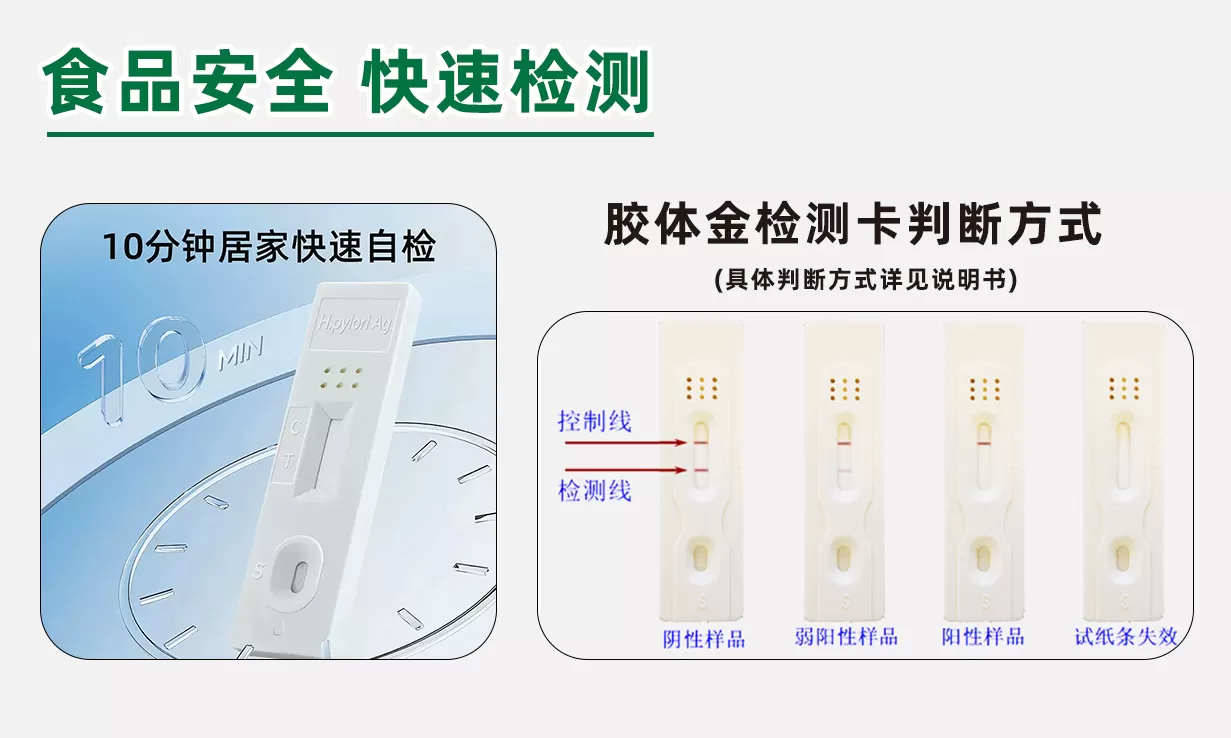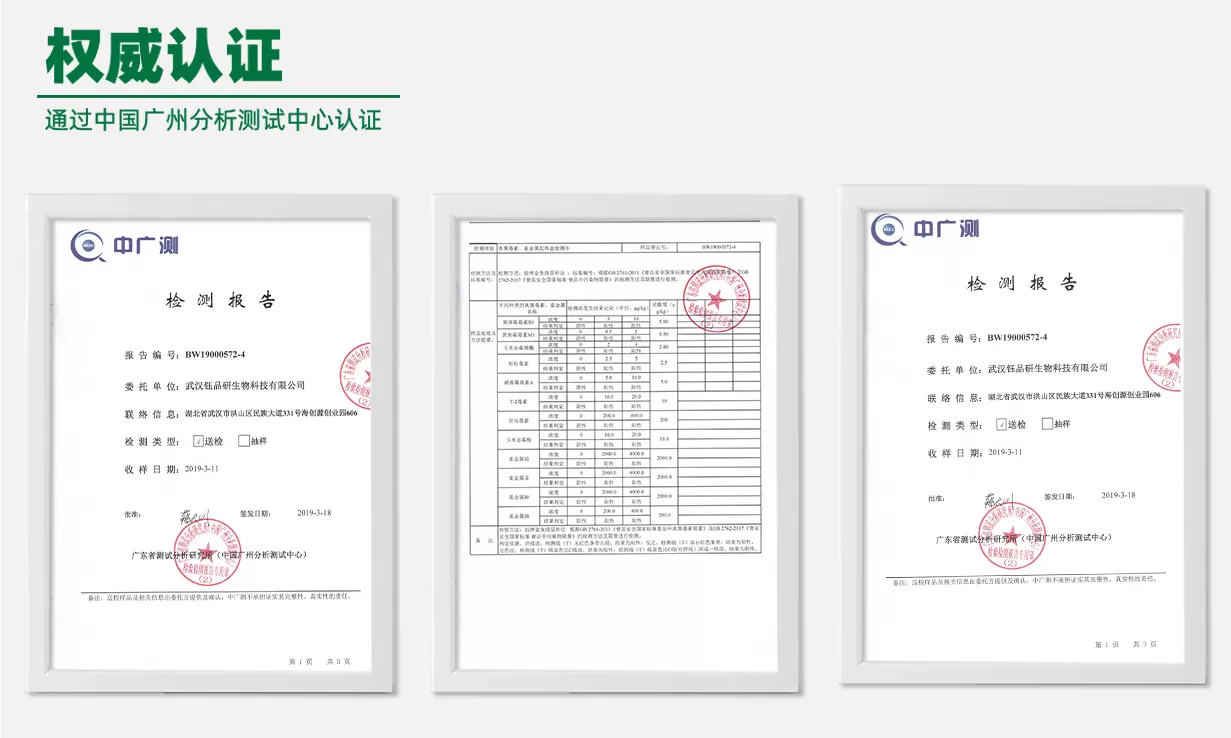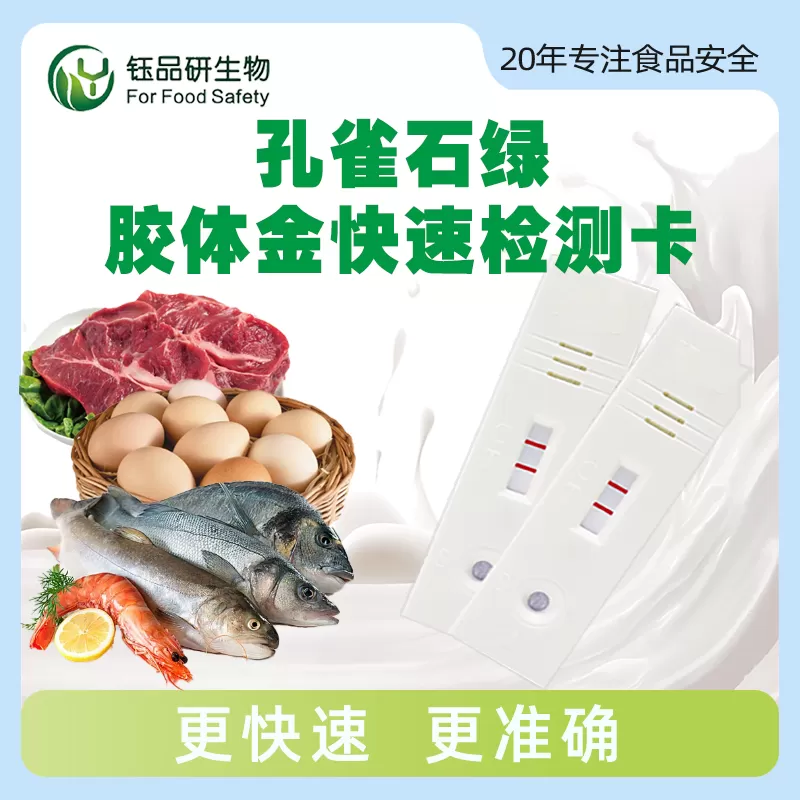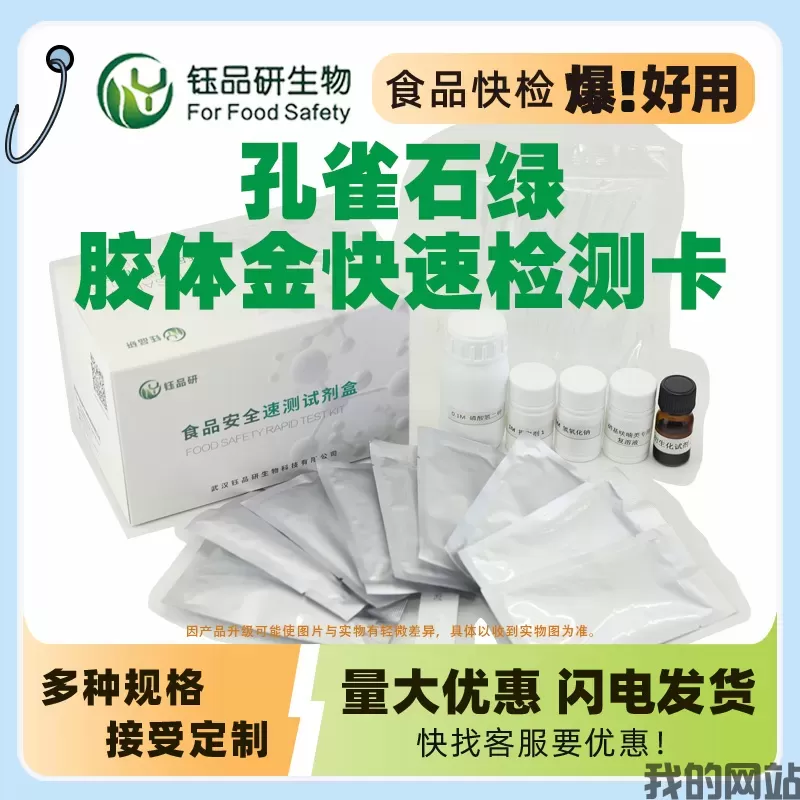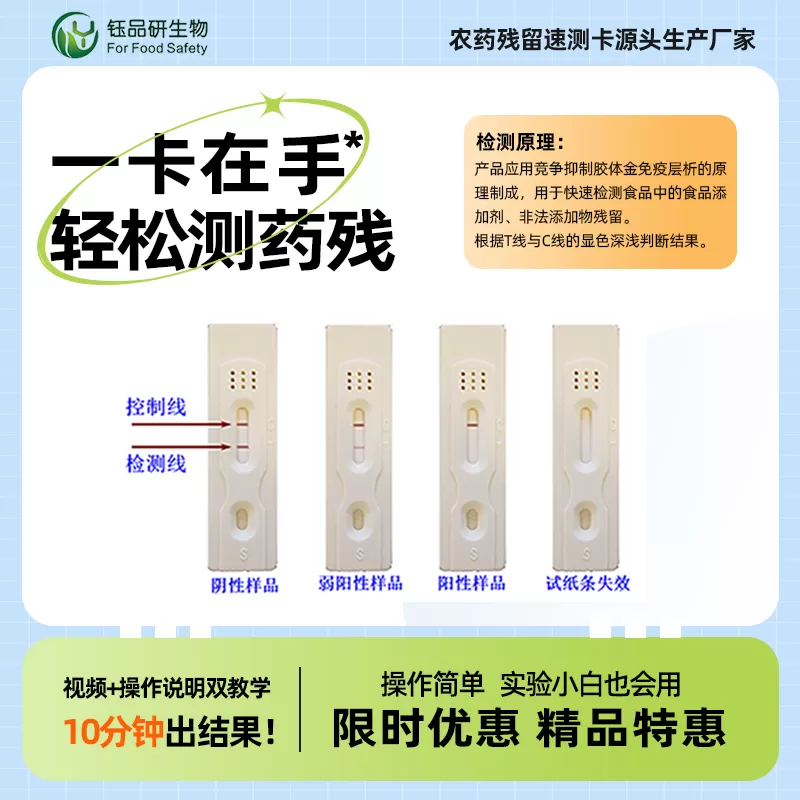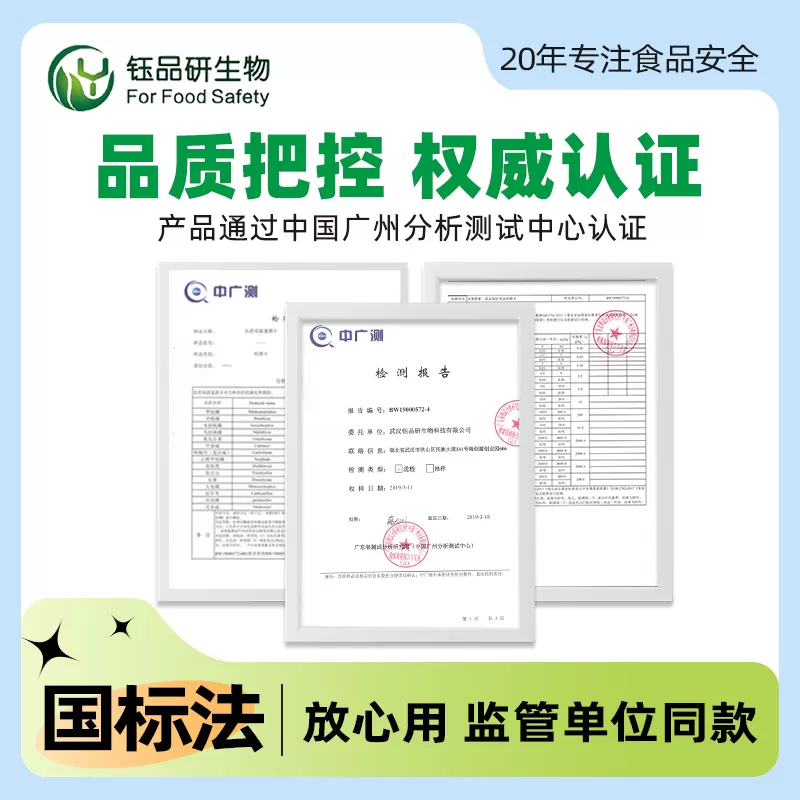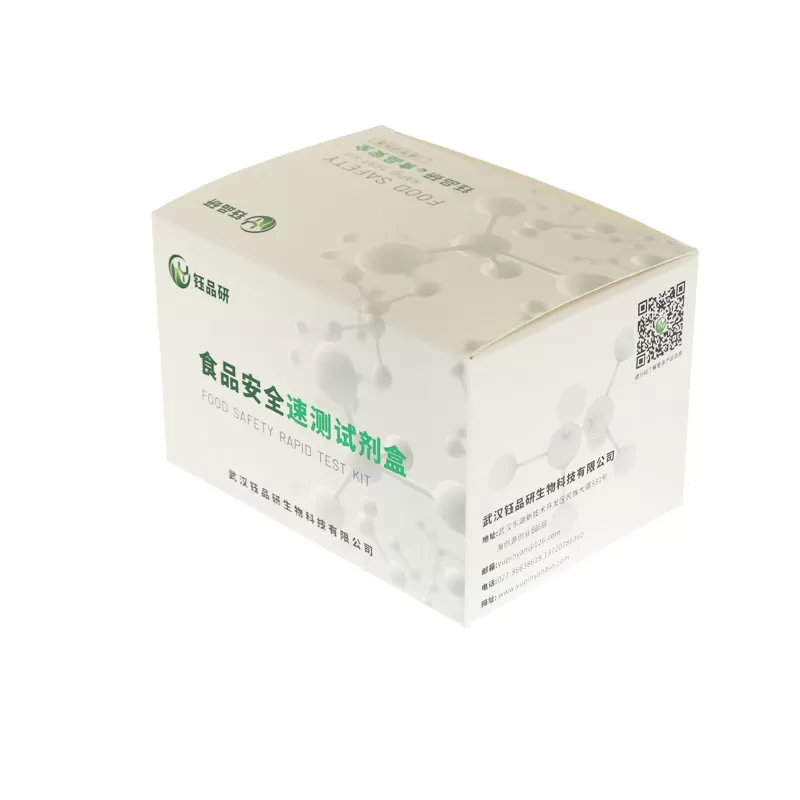Malachite Green Colloidal Gold Rapid Detection Card
Instruction Manual
1 Principle and Use
This product is made of the principle of competitive inhibition of colloidal gold immunochromatography for the detection of malachite green residues in aquatic product tissue samples. After the sample solution is dropped into the sample hole of the detection card, the malachite green in the sample solution binds to the gold standard antibody, thereby preventing the gold standard antibody from binding to the malachite green conjugate on the cellulose membrane. The color development depth of the T-line and the C-line is judged according to the result.
2 Specifications
Malachite Green (recessive) Sensitivity: 0.5 μg/kg (ppb)
Crystal Violet (recessive) Sensitivity: 0.5 μg/kg (ppb)
3 Kit Composition
10 test cards (containing gold standard micropores, droppers, desiccant);
1 bottle, extractant 1; 1 bottle, extractant 2; 1 bottle of oxidizer;
1 bottle, reagent A; 1 bottle of MG complex solution; 10 ml centrifuge tubes; 1 instruction manual
4 Equipment and reagents that need to be brought by yourself 117277984Gos.1 Instrument: homogenizer, nitrogen blow-drying device/sample concentrator, shaker, centrifuge, 50 mL centrifuge tube, balance
4 .2 Micropipette: single channel 20 µL-200 µL, 100 µL-1000 µL
5 Sample pretreatment
5 Take a certain amount of chopped tissue samples of degreased aquatic products and homogenize them with a homogenizer;
5 Weigh about 4 g of homogeneous material in a 50 mL centrifuge tube;
5 Add 0.5 mL of extractant 1 and 1 mL of extractant 2 to the above 50 mL centrifuge tube in sequence, then add 4 mL of reagent A, tighten the lid and shake vigorously for 2 minutes;
5 Centrifuge at room temperature (20-25 ° C) 4000 rpm for 5 minutes;
5 Aspirate 1 mL of supernatant in a 10 mL centrifuge tube, add 100 µL of oxidant, and blow dry with nitrogen or air at 60 ° C to obtain solid residue;
5.6 Add 0.3 mL of MG complex solution to the blow-dried centrifuge tube and repeatedly suck into the tube with a straw The liquid is used to flush and dissolve the substance to be tested on the wall of the pipe, as the liquid to be tested, and immediately enters the next step of testing.
6 sample detection
6.1 Tear off the aluminum foil bag, take out the detection card and the gold standard micropores, and place them flat on the table;
6 with a dropper or pipette to absorb 120 µL (about 4 drops) of the liquid to be tested, and add it to the gold standard micropores vertically., with a dropper or pipette repeatedly to dissolve the red substance in the micropores, and wait for the reaction for 2 minutes;
6.3 All the liquid in the suction micropores is added dropwise to the sample hole of the detection card;
6 Start timing after adding the sample, and place it at room temperature for 8-10 minutes to judge the result.
The interpretation is invalid at other times. 7 Results
Negative: Purple red line appears on the control line (C), and the color development of the test line (T) is deeper or the same as that of the C line, indicating that the concentration of the substance to be tested in the sample is lower than the detection limit or there is no residue of the substance to be tested.
Positive: Purple red line appears on the control line (C), and the color development of the test line (T) is not colored or the color development of the T line is significantly lighter than that of the C line, indicating that the concentration of the substance to be tested in the sample is higher than the detection limit. If the T line shows green, it can be judged as positive.
Failure: In the detection window, the purple line does not appear on the control line (C).
8 Precautions
8.1 Products that have expired or damaged aluminum foil bags cannot be used.
8 When the test card is taken out from the refrigerator, it should be restored to room temperature and opened. The opened test card should be used as soon as possible to avoid failure after dampness.
8 Do not touch the white film surface in the center of the test card.
8 The liquid dropper should not be mixed to avoid cross-contamination.
8. 5 The sample solution to be tested should be clear, free of cloudy particles, and free of bacterial contamination, otherwise it will easily lead to abnormal phenomena such as blockage and insignificant color development, thus affecting the judgment of the experimental results.
9 Safety Instructions
Reagent A is a flammable reagent, and it should be kept away from fire sources when used. If it comes into contact with the skin, rinse it thoroughly with soap and water. If it comes into contact with the eyes, the eyelids should be lifted, rinsed with water or normal saline, and seek medical attention. If you accidentally eat it, drink enough warm water, induce vomiting,
10 storage and shelf life
Storage conditions: 4-30 ℃ in the dark, do not freeze.
Shelf life: valid period 1 year, see the outer packaging for the production date.

